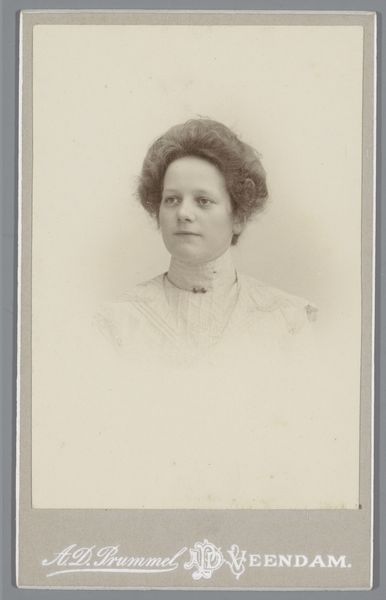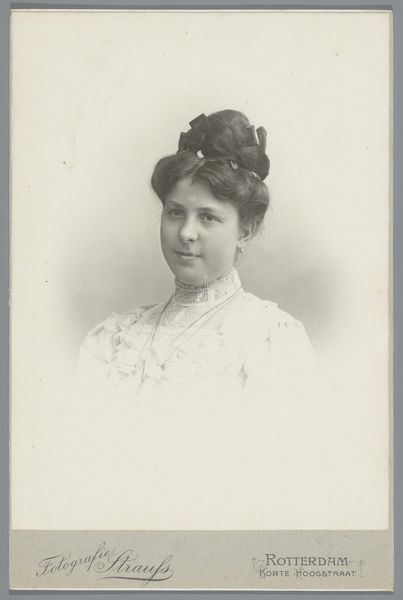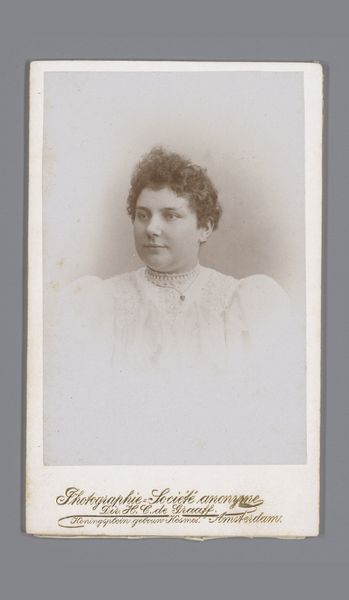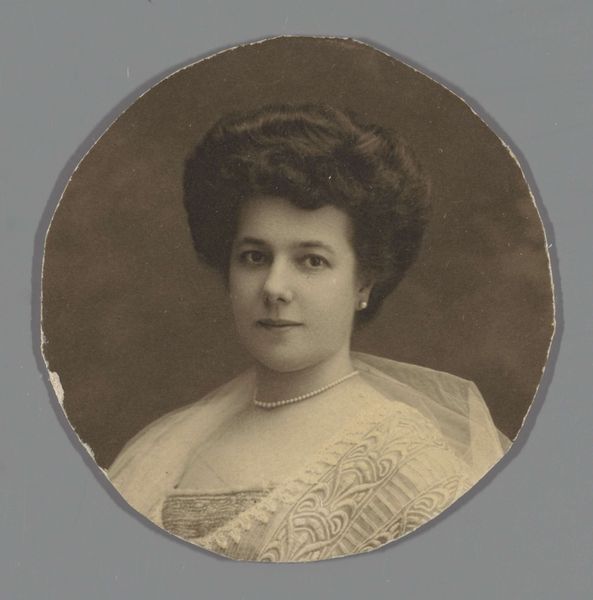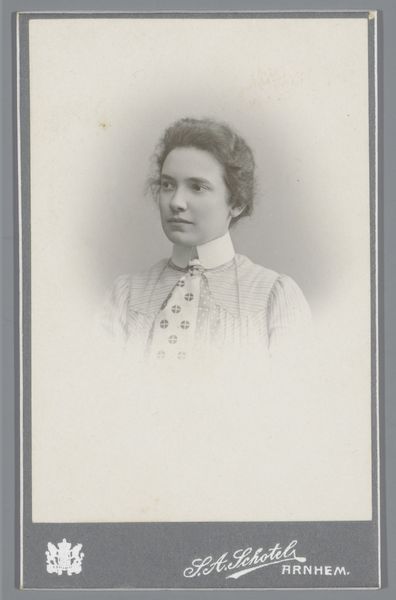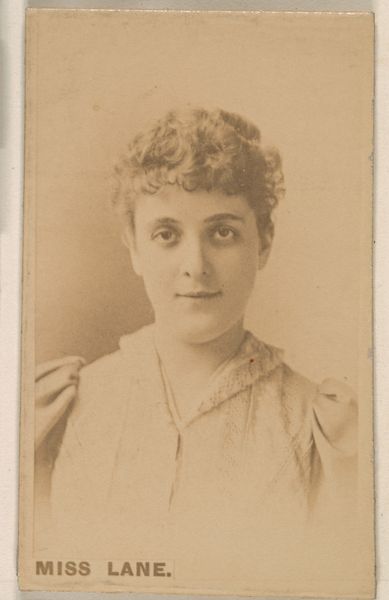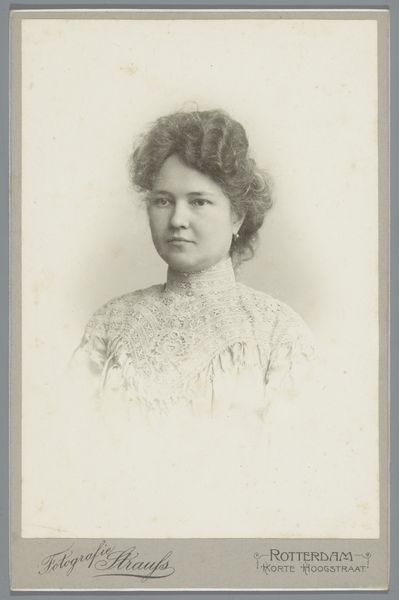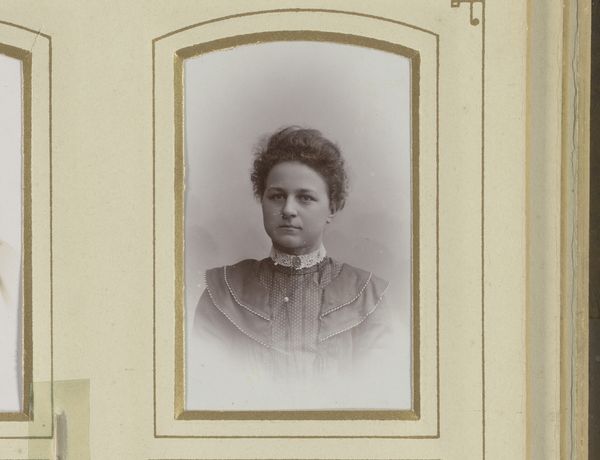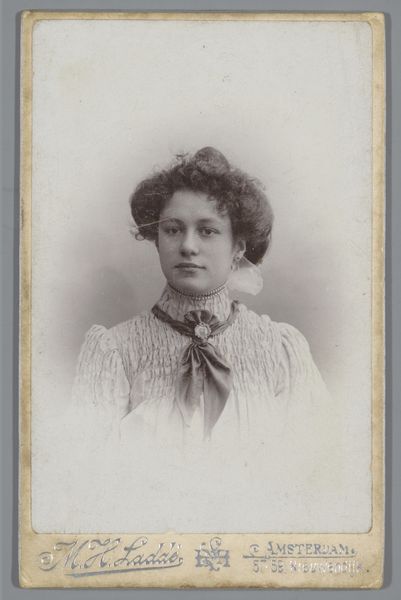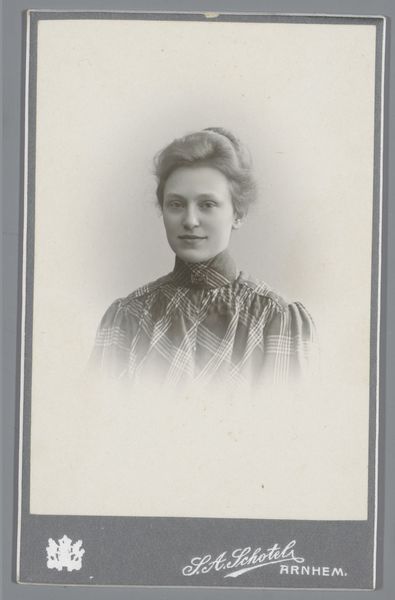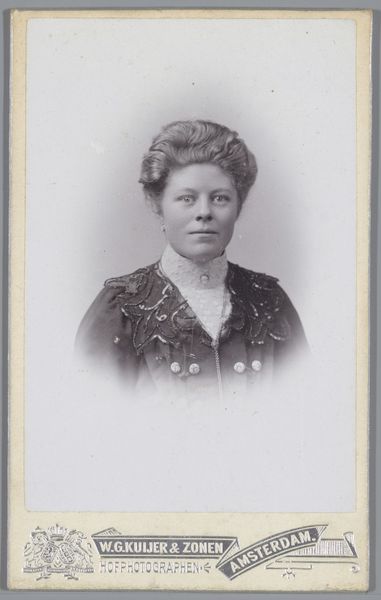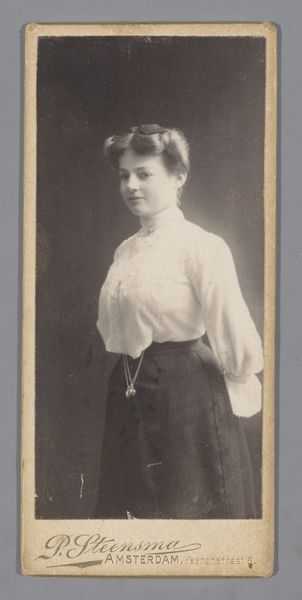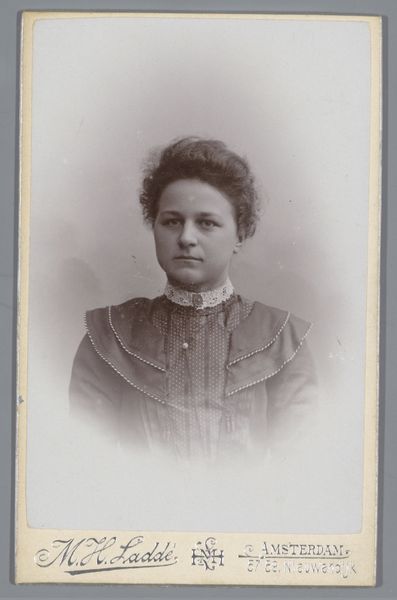
photography
#
portrait
#
photography
#
historical photography
#
historical fashion
Dimensions: height 105 mm, width 65 mm
Copyright: Rijks Museum: Open Domain
Curator: The first impression I get from this vintage photograph is one of subdued elegance. It feels very contained, reserved, and classical. Editor: I'm so glad you used the word 'vintage.' Let's provide our listeners with some context. What we're seeing is entitled "Portret van Louise Honing," created in 1905 by Stephanus Adrianus Schotel, working then in Arnhem. Given that the medium here is photography, it is interesting to note his wider engagement with traditional modes such as painting and printmaking, especially in its intersection with developments in imaging technologies. Curator: And fashion, clearly. Honing is wearing a lace-collared blouse that is fairly structured, so it is not surprising to see portrait photography mirroring the societal expectation of women's attire from the early 20th century, reflecting both restriction and, potentially, status. Editor: Indeed. Think about the societal context here; Edwardian sensibilities still held sway. This portrait offers an intriguing glimpse into bourgeois culture in the Netherlands at the time and perhaps the sitter’s place within it. Curator: The details draw me in. Look closely at the photographic chemistry. Considering what we understand about contemporary photography's retouching trends, there is some obvious alteration to skin tones in this portrait. Does this speak to standards of beauty being imposed, even manipulated, through early photographic methods? Editor: A definite point worth considering! I think understanding the rise of photography's public function is crucial here. Early photography studios became powerful institutions in shaping individual and collective identities, creating visual records intended for widespread circulation. Curator: It becomes an artifact in itself, capturing fleeting moments through a fixed gaze but leaving questions that allow us to revisit those earlier cultural moments through contemporary lenses. What can an image like this tell us today, as much about that period as the act of remembering it now? Editor: Exactly. Perhaps images like these remind us of photography's early function as cultural commentary itself. It has helped shape what art means to us at any point in history, now more than ever.
Comments
No comments
Be the first to comment and join the conversation on the ultimate creative platform.
